
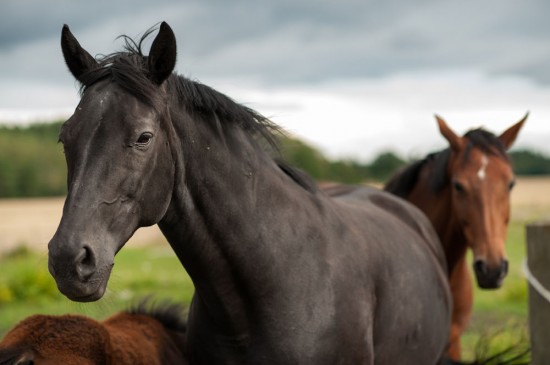
Anyone who owns or cares for horses knows that good health is essential if your equine is to perform all the tasks that are expected of him and to help keep him happy and settled. Horse owners work hard to ensure their horse is kept in the best of health and an effective worming programme is vital if he’s to stay fit and well.
The prevention of both internal and external parasites is key to a healthy horse. As an animal with a complex and delicate gut that provides a perfect environment for worms to live and breed, it’s very important that horses are treated to eradicate any parasites that may be present. It’s also important that any worming programme is carried out in consultation with your vet.
The bot is the larval stage of the bot fly which is ingested and attaches to the stomach lining causing pain and inflammation.
Another stomach-dwelling creature, the hairworm is unique as it can affect horses and ruminants such as cows and sheep.
These parasites are common in very young horses. Symptoms of a heavy ascarid burden include coughing, nasal discharge, lethargy and colic.
Again, this parasite is common in very young horses but rarely affects those over six months of age. The infection is usually passed through the mare’s milk.
The tapeworm lives in the small intestine and caecum, feeding off the contents of the gut rather than the gut itself. Despite not feeding on the gut directly, they can cause illness by attaching themselves to the wall of the stomach, leading to ulcers that can cause abscesses and colic.
A large strongyle infection is potentially very serious. These parasites can damage arteries during the migratory stage, which can lead to blood clots in the intestinal wall. Symptoms of a large strongyle infection include anaemia and a loss of condition.
Another potentially serious invader, the small strongyle migrates into the wall of the intestine where they create cysts. When migration ceases and after a period of inhibition, a mass emergence of larva occurs from the cysts that can have a devastating impact on the horse. Loose stools, ulcers on the mucus membranes accompanied by bleeding and colic are all symptoms of a small red worm burden.
A pinworm infection is fairly common in horses and is usually characterised by irritated skin around the anus.
This is mainly a parasite of donkeys, and horses generally become infected by sharing fields with them. Although they may have an infection, horses might not necessarily show any signs of respiratory distress at the time, although the damage caused by this parasite may contribute to respiratory disease as the animal ages.
Anthelmintics can be used to effectively control bots, hairworm, lungworm (benzimidazole anthelmintics only), large and small strongyles, while Pyrantel and Praziquantel are the only equine treatments available for threadworm in the UK. All other parasites will be controlled by a regular worming programme using one or a combination of wormers. Pasture management is also recommended for keeping parasitic infection at bay. Regularly removing faeces from the paddock and rotating grazing will help keep worms in check.
It is also important to vary the types of wormer you use as the worms can build up a resistance to treatment if the same medication is used each time. There are many brands or wormer with many combinations of ingredients to help you keep your worming routine varied and to help prevent resistance. It’s important to research your wormers thoroughly however, and choose a different ingredient for the same job, not just another brand.
As the weather in the UK – damp summers and warmer winters – is perfect for worms to thrive, it’s essential that your worming programme is considered carefully and in conjunction with your vet. Dry summers and bitterly cold winters are the enemy of worms so your worming programme needs to be as tight as it can be.
By developing a tactical plan to target specific worms during the winter and a rotational approach - using different chemicals - during grazing (generally the summer months) you will certainly feel and see the benefits. You should choose one of the following chemical groups:
Macrocyclic Lactones - Ivermectin and Moxidectin
Tetrahydropirimidines - Pyrantel
Benzimidazoles - Fenbendazole, Mebendazole, Oxibendazole
Products containing only Praziquantel should be used alongside wormers from one of the three chemical ingredient groups. Wormers containing Praziquantel alongside another of the main chemicals are available and are a great solution when tapeworm control is needed alongside routine worming.
Tactical worming means that you are worming for whichever parasite species is prevalent at that particular time of year. For example, you should worm for bots and small redworm during the winter months and tapeworm during the summer. Large and small strongyles can also be targeted during the grazing period.
It is also becoming increasingly popular to worm only when needed; by having your horse’s droppings tested and worming depending on the results. Testing kits can be purchased from farm and tack shops and include instructions on how to collect your sample. The faecal matter you collect will be sent to a laboratory where it will be screened and the results sent back to you. Using this method means you are only worming when absolutely necessary and for the species that may be present. This can save money and means your horse isn’t exposed to powerful chemicals more often than is necessary.
When deciding on a worming programme it’s vital you take the age and health of the horse into account. You should also gauge the weight of the horse using either a weigh bridge or a weight tape. Under estimating the weight of the horse can mean that not enough wormer is delivered which can leave the infection unaffected and could even mean the worms build up resistance to the chemicals and pass that resistance on to their larvae. Foals should only be given treatments suitable for use on foals and pasture management should also be undertaken.
As previously mentioned, wormers contain powerful chemicals so the environment in which your horse lives should also be considered. Do you have ponds or streams with aquatic life nearby? If so it would be wise to stable the horse during worming and for two or three days afterwards to ensure no chemicals enter the watercourses. This also protects the local plant and wildlife from spillages.
Dogs, cats and small children should also be kept away from areas where wormers are stored or used as some of the ingredients can prove fatal to dogs. Border Collies are particularly at risk.
 How To Know When Your Dog Is Sick
How To Know When Your Dog Is Sick
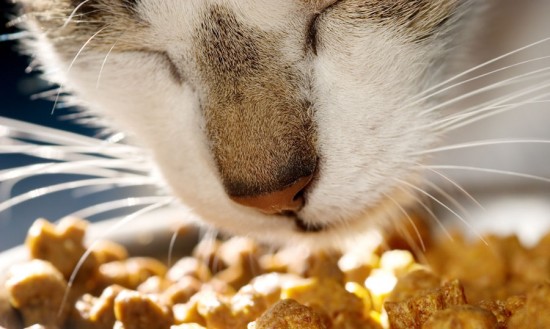 Famished Felines - Could Your Cat Have An Overactive Thyroid Gland?
Famished Felines - Could Your Cat Have An Overactive Thyroid Gland?
 The Role Of Breed Clubs In The Improvement Of Pedigree Dog Breeds
The Role Of Breed Clubs In The Improvement Of Pedigree Dog Breeds
 Reliable Chicken Coops offered with A Dynamic Range of Choices
Reliable Chicken Coops offered with A Dynamic Range of Choices
 Give Your Bunny Pets Huge Rabbit Hutches That Makes it His Bedroom
Give Your Bunny Pets Huge Rabbit Hutches That Makes it His Bedroom
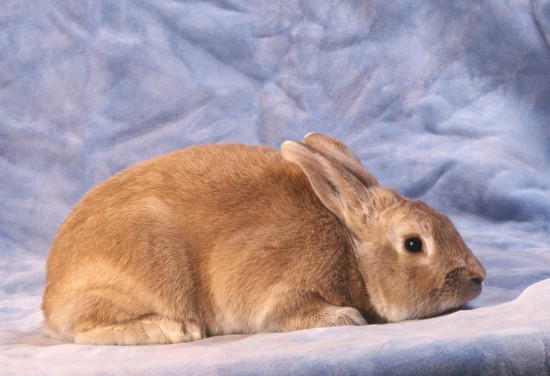 A Guide To Rabbit Colours
A Guide To Rabbit Colours
 Keeping Terminology Simple When A Pet Is Diagnosed With Cancer
Keeping Terminolo
Keeping Terminology Simple When A Pet Is Diagnosed With Cancer
Keeping Terminolo
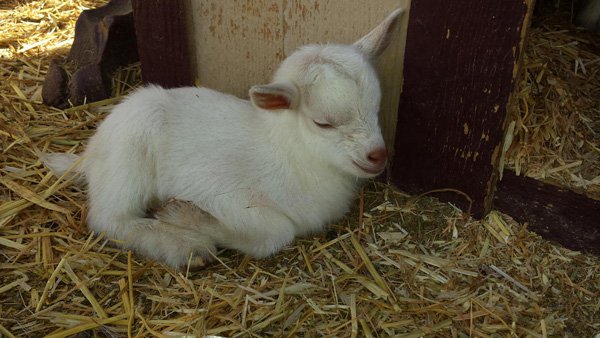 Dog Daycare to Keep Your Dog in a Happy and Jolly State
Dog Daycare to Keep Your Dog in a Happy and Jolly State
Dog Daycare to Keep Your Dog in a Happy and Jolly State
Dog Daycare to Keep Your Dog in a Happy and Jolly State
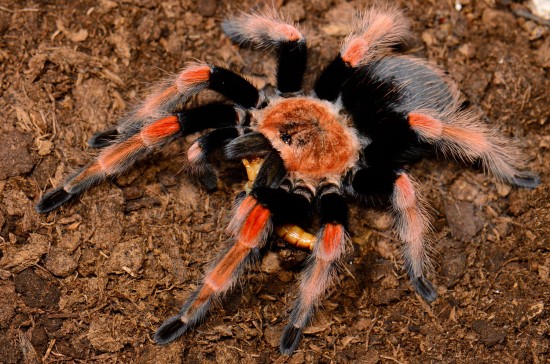 Common Questions And Misconceptions About Tarantulas
Common Questions
Common Questions And Misconceptions About Tarantulas
Common Questions
 First Aid For Cats
First Aid For Cat
First Aid For Cats
First Aid For Cat
 How Does Vitamin B12 Help Cats?
How Does Vitamin
How Does Vitamin B12 Help Cats?
How Does Vitamin
Copyright © 2005-2016 Pet Information All Rights Reserved
Contact us: www162date@outlook.com